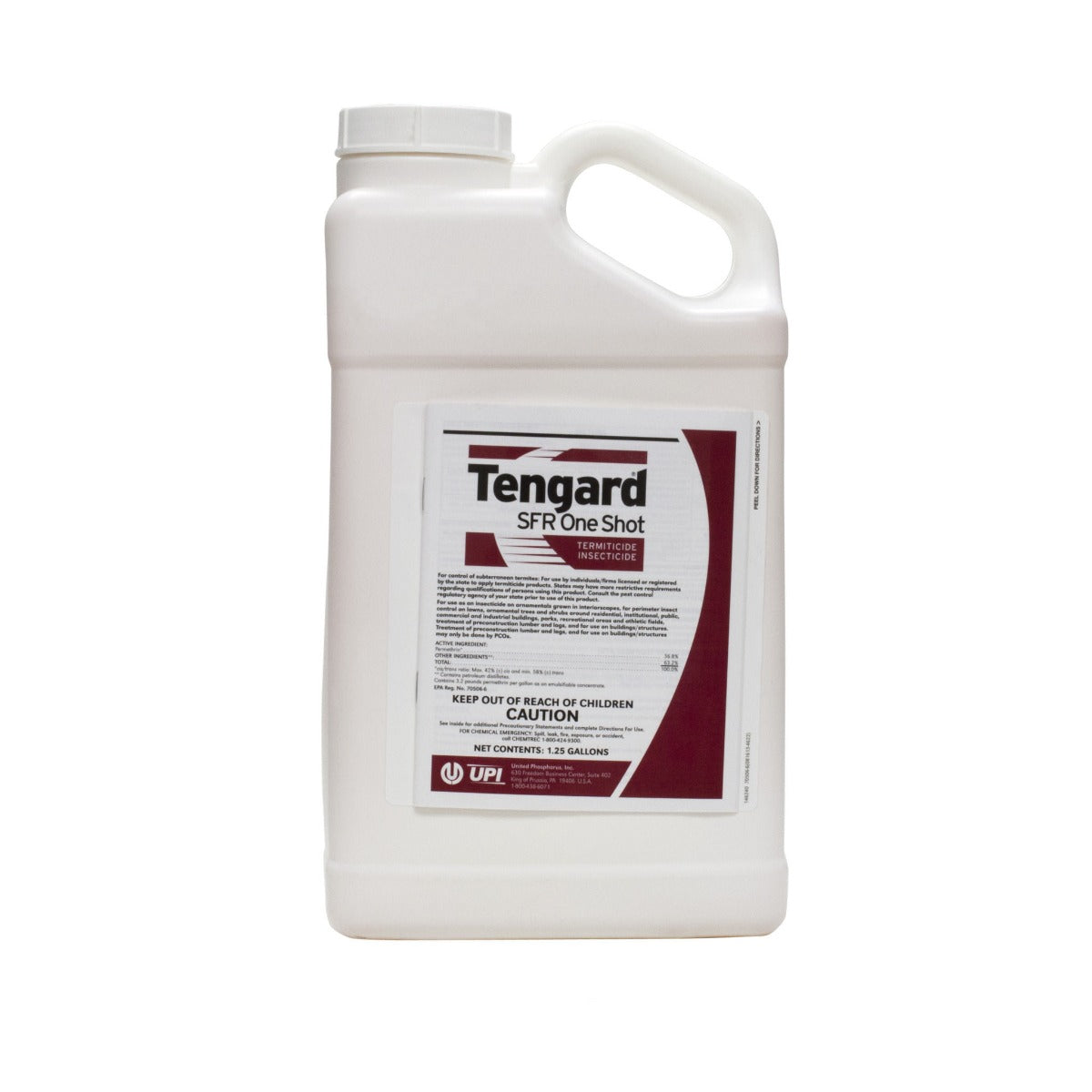Description
- Description
- Features and Benefits
- Specs
- Labels and SDS Forms
Tengard SFR Termiticide/Insecticide delivers powerful and long-lasting pest control with over 75 listed insects covered, including ants, fleas, termites, ticks, and roaches. Featuring 36.8% Permethrin, this professional-grade, low-odor formula is suitable for indoor and outdoor use, including livestock premises, ornamental plants, turf, and around structures. One quart yields up to 20 gallons of finished spray, providing broad-spectrum protection. Also approved for subterranean termite treatments in pre- and post-construction settings.
- Controls over 75 indoor and outdoor pests including ants, roaches, ticks, fleas, and termites
- Formulated with 36.8% Permethrin for fast knockdown and lasting residual activity
- Professional-grade and low-odor formula for versatile use around structures and landscapes
- Approved for subterranean termite prevention and treatment
- Safe for use in livestock areas, on companion dogs, and around fruit and nut trees (residential)
- One quart yields up to 20 gallons of ready-to-use spray
- Can be applied as a perimeter barrier, broadcast lawn spray, or spot indoor treatment
| ACTIVE INGREDIENT | Permethrin 36.8% |
| TARGET PESTS | Subterranean Termites, general and ornamental insect control. |
| FOR USE IN | Commercial & Residential, Recreational areas |
| APPLICATION | Perimeter treatment of Lawns, Ornamentals, Recreation areas and Athletic Fields, Indoor spot, Crack & Crevice Treatments |
| MANUFACTURER | United Phosphorus |
| EPA REGISTRATION | 70506-6 |
| NOT FOR SALE TO | AK CT, NY, VT (Restricted To Licensed Applicators Only) |
| COMPARABLE PRODUCTS | Permethrin SFR |
Payment & Security
Your payment information is processed securely. We do not store credit card details nor have access to your credit card information.











